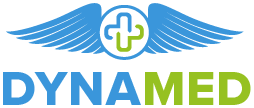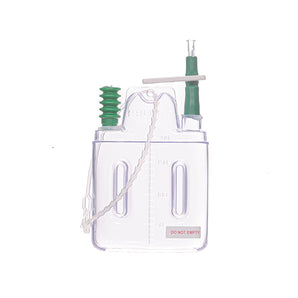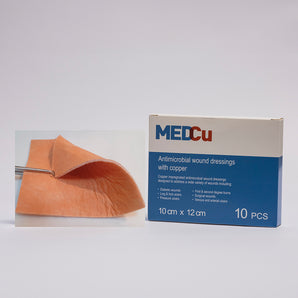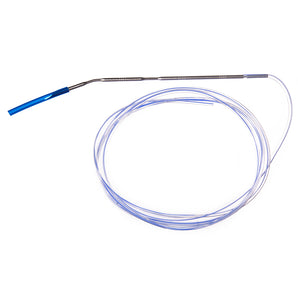In the ever-evolving world of medical science, advanced wound care has emerged as a critical area of focus. It's a sector that's growing rapidly, driven by the increasing need to address complex wounds that require more than traditional methods.
Advanced wound care takes us beyond the simple bandage. It encompasses a range of treatments and technologies, from debridement and pressure management to biological therapies and innovative therapeutic devices. It's a response to the growing challenges we face, particularly with the rise of conditions like diabetes and associated complications, such as foot ulcers.
So, let's delve into the world of advanced wound care, exploring its importance, the key trends shaping its future, and the innovative solutions that are transforming wound management. This knowledge will empower us to better understand and navigate this crucial aspect of healthcare.
Key Takeaways
- Advanced wound care is an evolving sector in medical science which involves innovative methods and technologies to promote the healing process of complex wounds, with a strong focus on chronic wounds such as diabetic and venous leg ulcers.
- Techniques used in advanced wound care include debridement, pressure management, Negative Pressure Wound Therapy (NPWT), Electromagnetic Therapy, and the use of specialised wound dressings that ensure a moist environment optimal for healing.
- Technological advances such as 3D imaging and electronic skin patches are transforming the way wounds are monitored and treated, providing accurate data for practitioners and non-invasive options for patients.
- Assessment for effectiveness and cost-efficiency is crucial in advanced wound care. This includes the evaluation of outcomes from controlled trials of therapies and the prospected savings from improved ulcer healing, reducing hospitalisations, and lesser medical interventions.
- The future of advanced wound care is promising with ongoing research on new therapies, continuous technological advancements, and a patient-centred approach to the creation of wound care strategies and products.
- Advanced wound care improves quality of life for patients dealing with chronic wounds, and there's potential for substantive progress with continued research and use of resources like Dynamed's wound care products.
Understanding Advanced Wound Care
In advanced wound care, multiple factors come into play. It involves innovative approaches and therapies to expedite the healing process, especially for complex wounds. Today, we'll explore the diverse world of advanced wound care in greater detail.
Overview of Wound Types
Advanced wound care's approach largely depends on the specific type of wound it targets. Wounds generally fall under two main categories: acute and chronic.
- Acute Wounds: These wounds, such as surgical incisions or trauma wounds, have an immediate cause and usually follow a predictable healing process.
- Chronic Wounds: On the other hand, chronic wounds, such as diabetic ulcers, venous leg ulcers, and pressure ulcers, don't heal in an orderly or timely manner.
Both acute and chronic wounds can benefit immensely from advanced wound care, but chronic wounds represent special challenges requiring targeted therapies.
Advanced Wound Care Techniques
Advanced wound care deploys various techniques and treatments tailored to specific wound types and healing stages. Here are some noteworthy methods used:
- Debridement: This technique involves removing dead, damaged, or infected tissue from a wound to accelerate the healing process.
- Pressure Management: Measures are taken to relieve pressure at the wound site, especially in cases of pressure sores. This can include using special cushions, mattresses, or bandages.
- Negative Pressure Wound Therapy (NPWT): This therapy contributes to healing by applying a vacuum or negative pressure to the wound. This technique enhances tissue formation, improves blood flow, and reduces bacterial contamination.
- Electromagnetic Therapy: In this method, an oscillating magnetic field generates an electric field at the wound site, which can stimulate or mimic the electrical fields naturally produced in human skin.
Role of Technology in Advanced Wound Care
Technological advancements are transforming the way wounds are treated and monitored. Here's how tech plays into advancing wound care:
- 3D imaging: This tech uses tablets or other devices to develop three-dimensional images of wounds, providing practitioners with accurate and detailed information for diagnosis and treatment.
- Electronic Skin Patches: These provide valuable data - monitoring things like temperature, heart rate, and glucose levels. Plus, they offer non-invasive monitoring options and an array of potential uses.
Key Components of Advanced Wound Care
In the vast landscape of advanced wound care, multiple elements work synergistically to expedite the healing of complex wounds. The components discussed in this section are comprehensive and incorporate cutting-edge developments in wound care technologies.
Wound Dressings
Constant evolution in technology leads to the adoption of advanced wound dressings, a substantial improvement from traditional dressings that often lacked an optimum healing environment. The advanced wound dressings from Dynamed, for example, ensure a moist wound environment, crucial for optimal healing. These dressings display antimicrobial properties to safeguard wounds from bacterial contamination, and include hydrocolloid dressings, foam dressings, alginates, and hydrogels.
Tissue Engineering and Regeneration
In advanced wound care, tissue engineering and regeneration play a significant role. Tissue engineering employs biological and bioactive dressings that possess intrinsic healing properties. They bear a structural resemblance to the extracellular matrix, providing an ideal environment for wound healing and regeneration.
Negative Pressure Wound Therapy (NPWT)
NPWT involves a tightly sealed dressing applied around a wound, in concert with a suction pump to apportion negative pressure uniformly, either continuously or intermittently. This method increases the granulation tissue, local perfusion, reduces tissue edema, and decreases bacterial load, spurring cellular proliferation.
Hyperbaric Oxygen Therapy (HBOT)
An innovative form of treatment, Hyperbaric Oxygen Therapy augments oxygen in the blood, allowing for higher concentrations to reach wound sites. This supports and accelerates the wound healing process and promotes the growth of new blood vessels, particularly beneficial for non-healing wounds.
Other Innovative Therapies
These may include Electromagnetic Therapy, which uses an electrical field developed from an oscillating magnetic field, effectively augmenting natural wound-induced electrical fields in human skin. These varied methods, along with continual advancements in treatment, promise impactful strides in advanced wound care.
Assessing the Effectiveness of Advanced Wound Care
Advanced wound care, an integral part of modern medicine, necessitates meticulous assessment for its effectiveness and cost-efficiency. A thorough evaluation reveals its role, utility, and potential in addressing chronic and non-healing wounds.
Studies and Research Outcomes
The effectiveness of advanced wound care therapies such as Negative Pressure Wound Therapy or Electromagnetic Therapy, often determined through randomised controlled trials, is pivotal to the healing journey of those contending with chronic wounds.
In a series of trials, patient assessments threw light on an array of outcomes. Primary outcomes focused on the percentage of ulcers healed by study completion, the time taken for complete ulcer healing, patient's global assessment, and their return to daily activities. Secondary outcomes involved careful examination of factors like ulcer infection, amputations, revascularisation surgeries, recurrence of ulcers, pain or discomfort, hospitalisation, progression to require home care and more. Overall, data from such studies enabled clinicians to curate unique treatment strategies, leverage advanced wound therapies, and ensure optimal results supported by absolute risk differences in wound healing.
Cost Effectiveness and Accessibility
When it's about advanced wound care, the equation of cost-effectiveness plays a crucial role. Despite the seemingly high costs of therapies and wound care products, they hold the potential of being cost-effective or even cost-saving. This perception leans on the proposition that improved ulcer healing, reduction in ulcer-associated morbidity, fewer hospitalizations, and limited medical interventions contribute towards overall savings.
Besides, the ease of use and accessibility of advanced wound care protocols and products, available via platforms like Dynamed, allow treatment plans to be seamlessly integrated into the patient’s routine care. Thus, not only do they enhance the quality of life for patients, but they also offer an affordable alternative to prolonged and often more expensive conventional treatments.
As the field of advanced wound care evolves, the onus lies in enhancing its positive impact through relentless research, comparison studies, and feedback incorporation, creating a promising path of healing and hope for those living with chronic wounds.
Future Directions in Wound Care
Building upon recent advancements in wound care, it's evident that the scope for future advancements in this area holds considerable promise. An assortment of innovative therapies like Negative Pressure Wound Therapy and Electromagnetic Therapy have become cornerstones for healing chronic wounds.
Technological Advancements and Research
Technology, often seen as a catalyst for change in many healthcare sectors, plays a pivotal role in advanced wound care as well. For instance, Negative Pressure Wound Therapy, available through Dynamed's range of wound care products, involves a suction pump applying negative pressure across the wound surface in a consistent, controlled manner. This therapy, an excellent example of technological intervention, aids in enhancing wound healing by increasing granulation tissue, local perfusion, and decreasing tissue edema and bacterial load.
Moreover, future research offers an exciting landscape, as it signifies an opportunity for new therapies to be developed. For instance, only 10 of 35 studies done on diabetic ulcers, and 4 of 20 studies completed on venous ulcers were comparative of two advanced therapies. No such studies existed for arterial or mixed ulcers. These data indicate the ground yet to be broken in the analysis and evolution of advanced wound care treatments.
High efficiency in wound care translates to improved quality of life for patients, making continuous research for treatment improvement an ongoing need. This quest for advancement provides a unique setup for the inclusion and testing of technological innovations, which go on to become key drivers in this field.
Patient-Centred Approaches
Looking ahead, a patient-centred approach stands as a crucial transformation in the world of advanced wound care. Considering each patient's unique needs and conditions should be a cornerstone for wound care products' design, whether advanced or standard. For instance, extensive research can be conducted on patients for whom, carefully monitored standard care itself can negate the necessity for an advanced therapy.
Moving forward, the proceedings for wound care need to take into account more than just inflicted areas. It requires a complete understanding of the patient's history, current medication, insurance information, and more. Instituting a holistic and patient-centric atmosphere will aid in the creation of strategies and products that target wound care more effectively and efficiently.
This explicit focus on the patient even extends to post-care processes. Care providers who also conduct comprehensive research and training programs targeted at improving the healing process can highlight this effort. For example, Stanford Health Care's initiative shows a commitment to continuous improvement in the healing process and helping patients recover.
With advancements in technology coupled with an inherent need for compassionate, patient-centric care, the future of wound care is dynamic and promising. It's clear that with resources such as Dynamed's wound care products and a focus on intensive research efforts, substantial progress towards advanced wound care, enhancing the quality of life for those coping with chronic wounds is within reach.
Conclusion
We've delved into the complexities of advanced wound care, shining a light on innovative therapies and their effectiveness. We've seen how crucial it is to evaluate outcomes and assess cost-effectiveness, and the role of platforms like Dynamed in making these therapies accessible.
Our journey took us to the cutting edge of wound care, where technology is shaping treatments and patient-centred approaches are becoming the norm. The need for further research is clear, particularly for complex ulcers, and we're excited about the potential this holds for future treatment development. As we look ahead, it's evident the future of wound care is dynamic and promising. With technology, personalised care, and research leading the way, we're confident in the continued evolution and improvement of wound care. As always, we remain committed to keeping you informed about these developments and advancements.
Visit Dynamed Pharmaceuticals
Phone: 0861 00 00 43
Website: dynamed.co.za
Email (Sales): sales@dynamed.co.za
Email (Info): info@dynamed.co.za
Google Maps: Find us here
Frequently Asked Questions
What is the focus of the article on advanced wound care?
This article delves into the specifics of advanced wound care, including therapies like Negative Pressure Wound Therapy and Electromagnetic Therapy. It assesses their effectiveness in healing chronic ulcers through randomised controlled trials, focusing on various outcomes and the cost-effectiveness of such therapeutic approaches.
How does the article approach the topic of cost-efficiency in advanced wound care?
The article weighs the effectiveness of therapies in terms of healing outcomes against their costs. Essentially, understanding the cost-efficiency of advanced wound care is determined based on factors such as healing percentages of ulcers, time to heal and patient assessments.
What platforms are highlighted for providing accessible advanced wound care?
The article highlights platforms like Dynamed for making advanced wound care accessible to a wider audience, helping to improve patient outcomes.
What potential future developments are highlighted for wound care?
The article outlines the role of technology in shaping future developments in wound care. It highlights the need for more research into developing new therapies for diabetic, venous, arterial, and mixed ulcers, paired with a shift towards a patient-centred approach.
What is the importance of a patient-centred approach in wound care?
Patient-centred approaches in wound care involve considering individual patient needs and histories in treatment design. This is critical as it helps create effective treatment plans tailored to the patient's specific circumstances and can dramatically improve healing outcomes.
What is the overall conclusion of the article?
The article concludes by stressing the dynamic and promising future of wound care, driven by technological advancements, patient-centric care, and intensive research efforts. The aim is to further improve the effectiveness and efficiency of treatment options available for various types of wounds.







